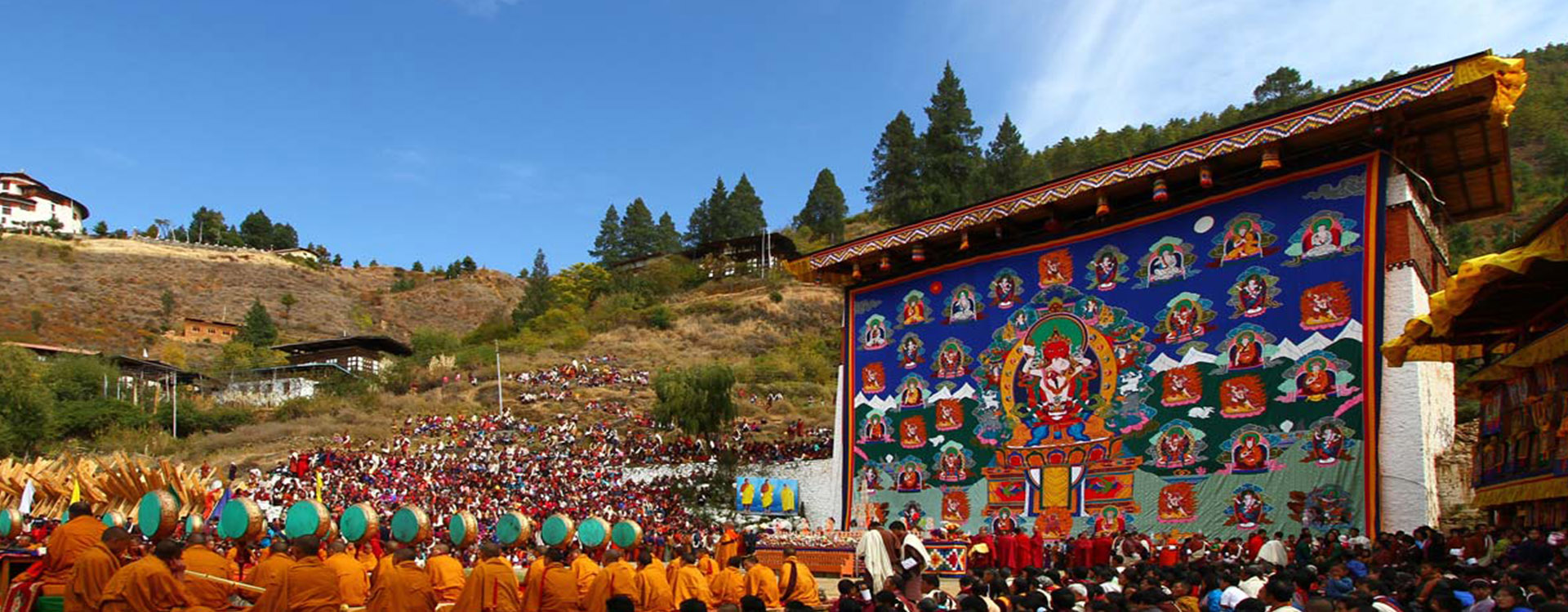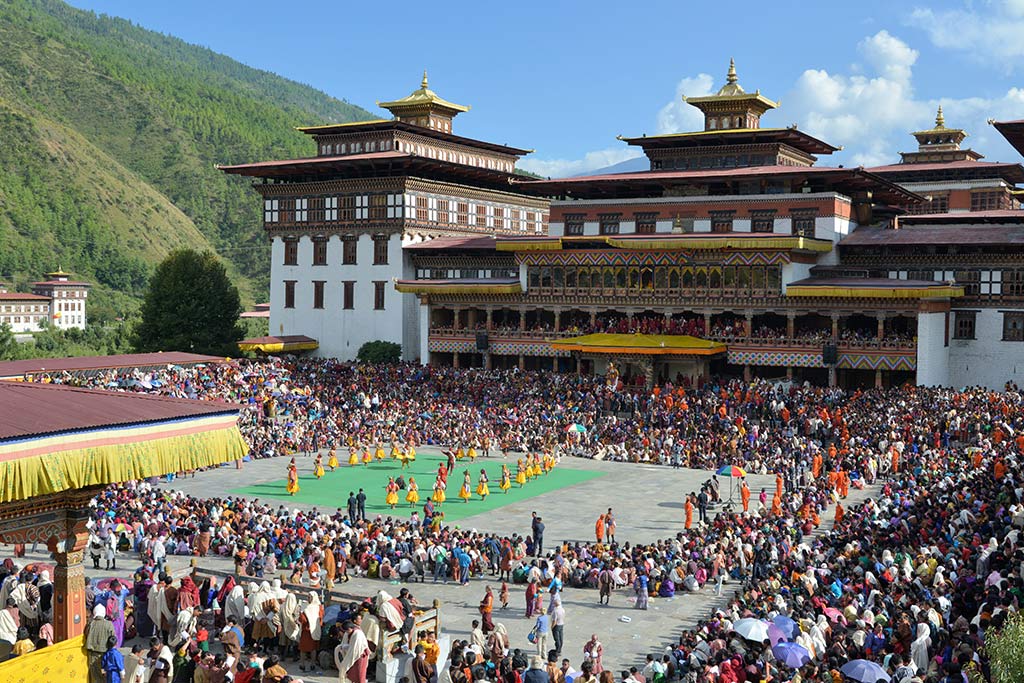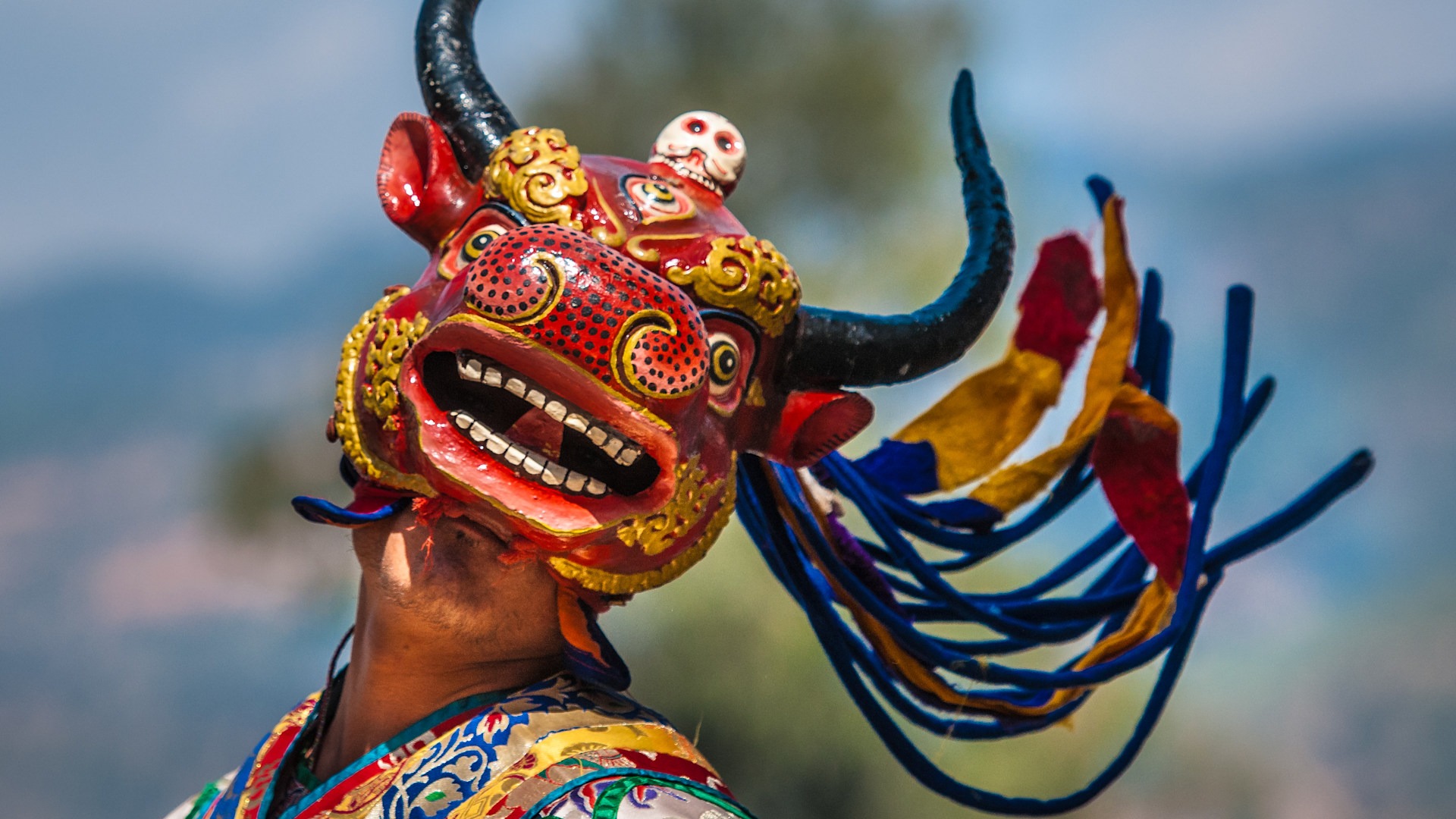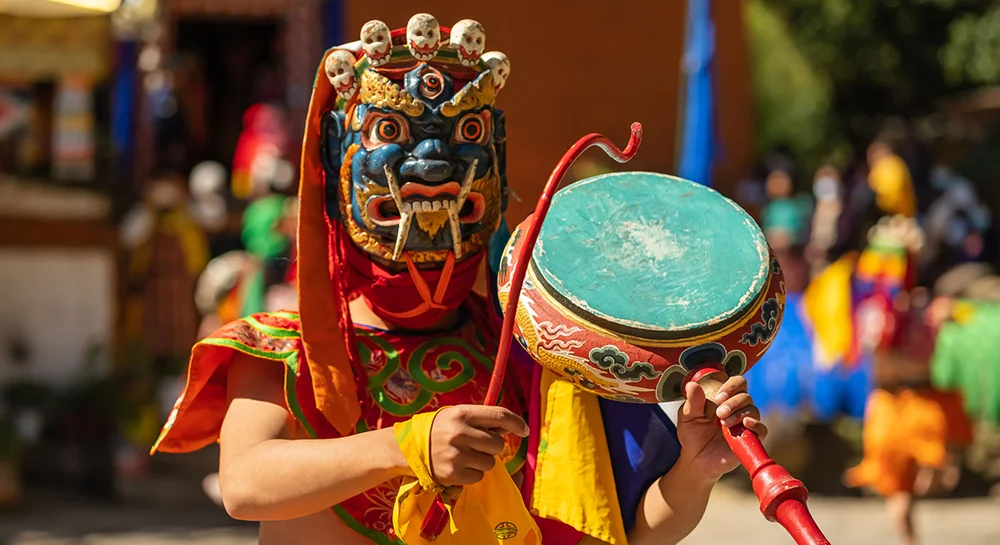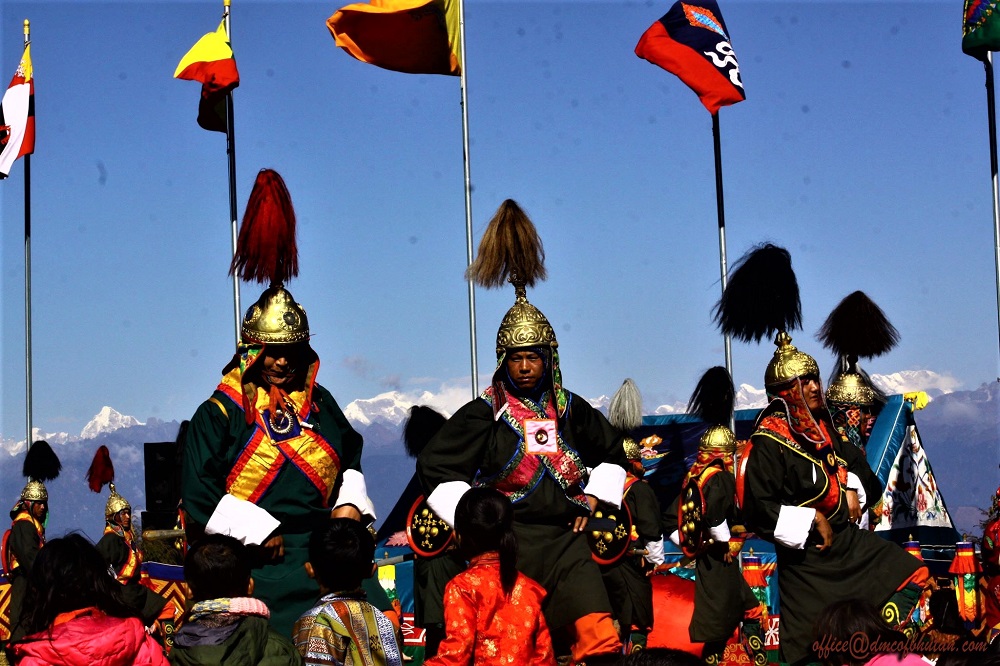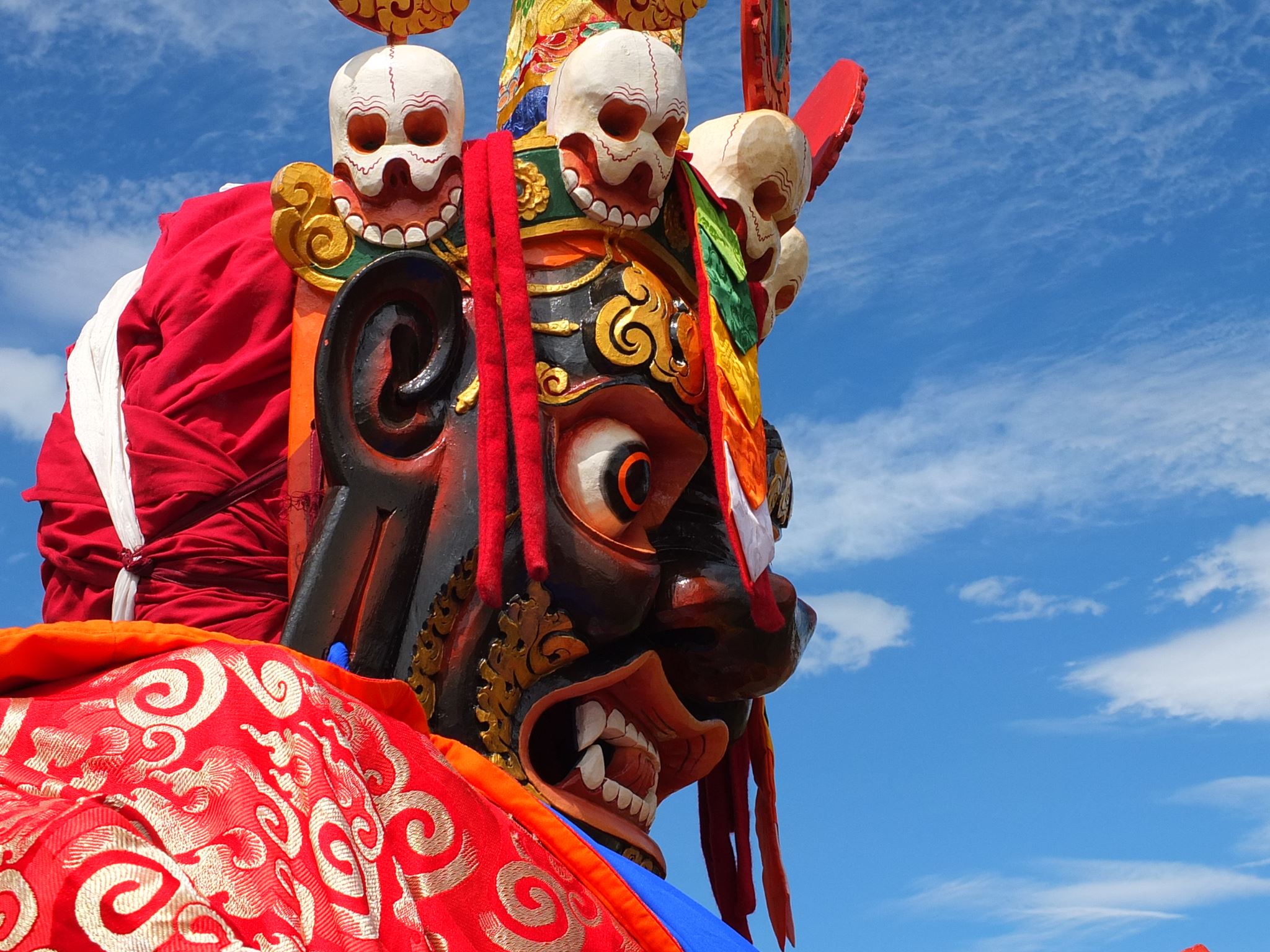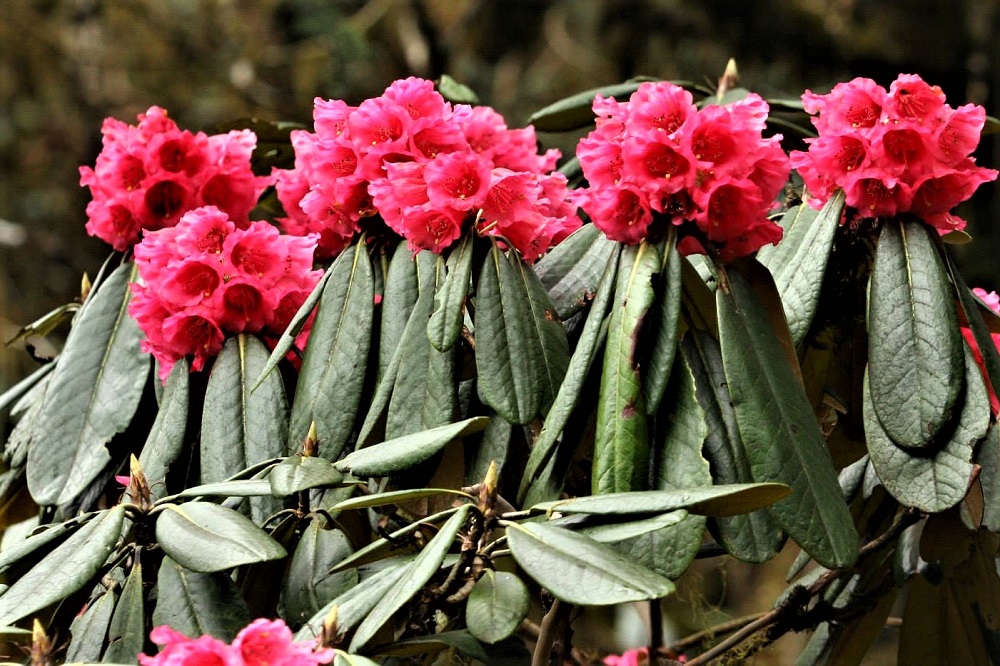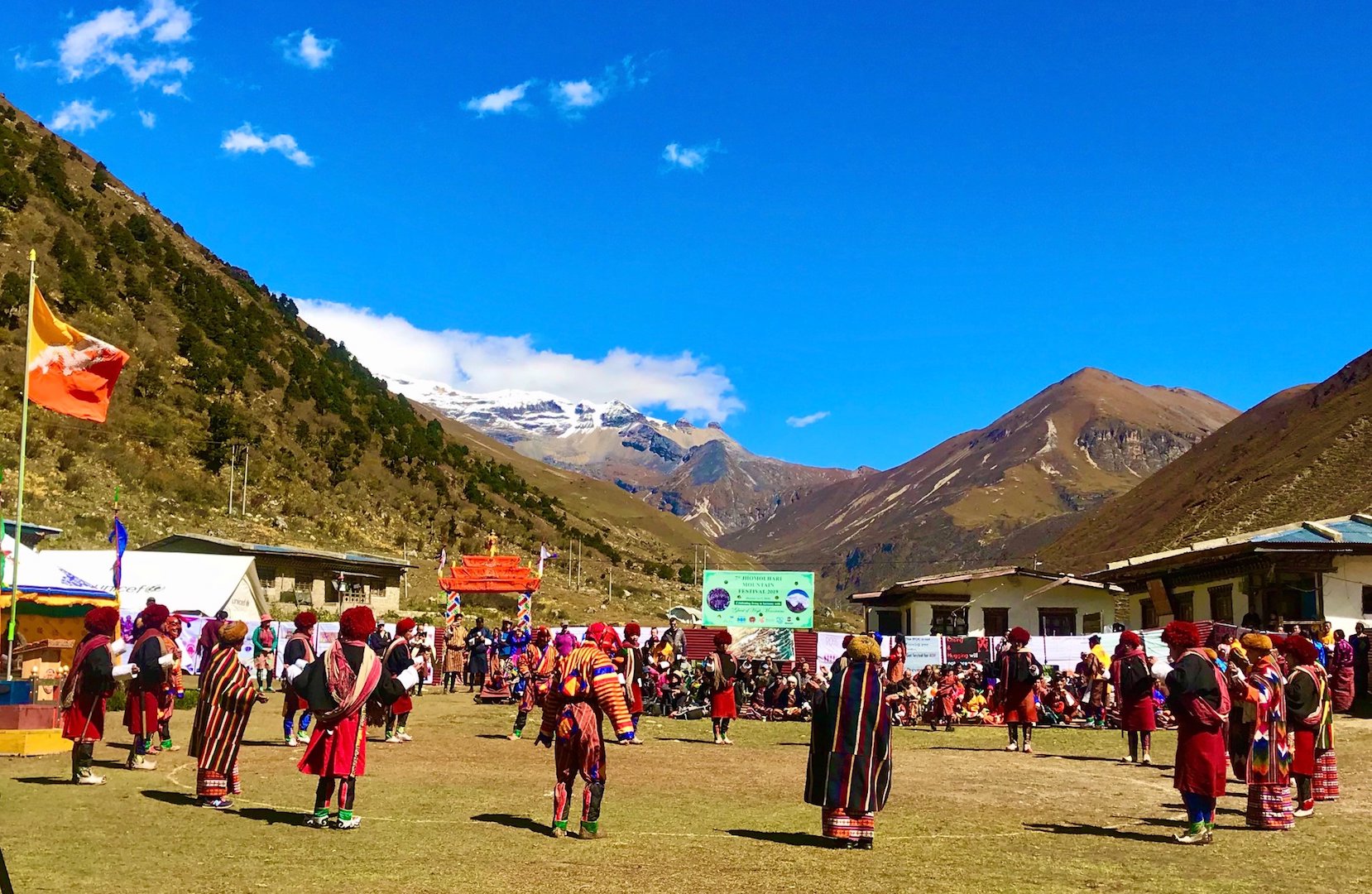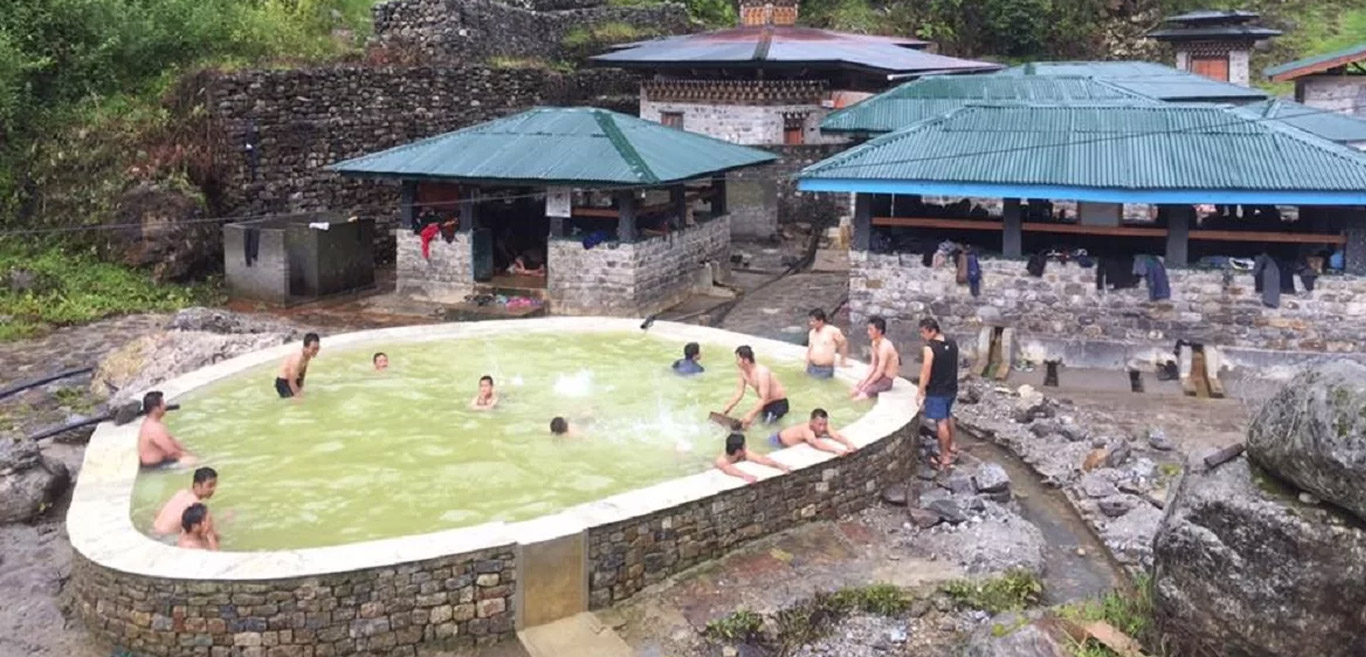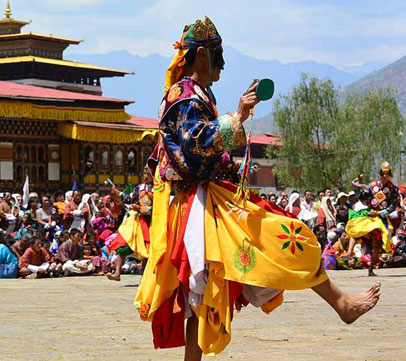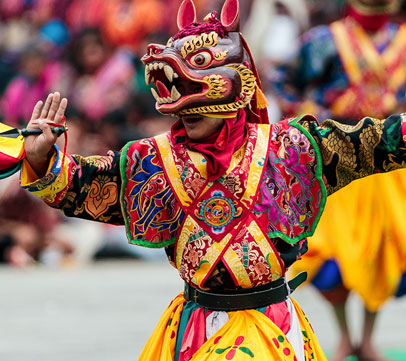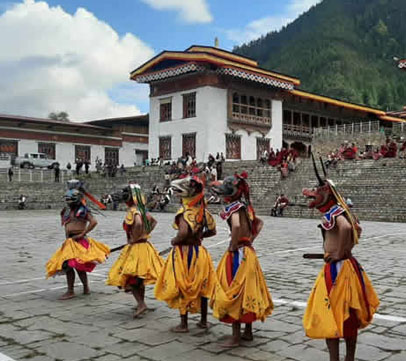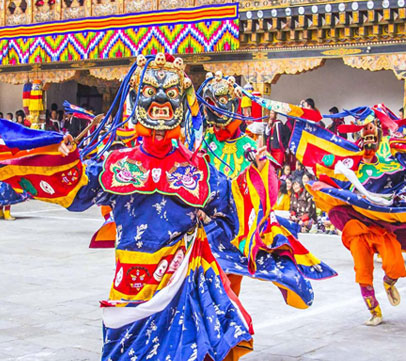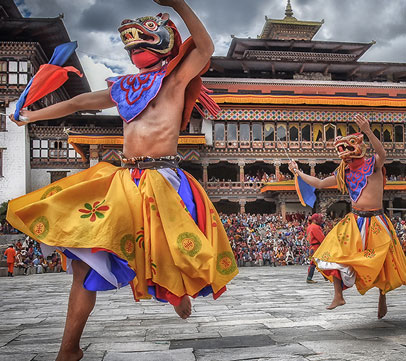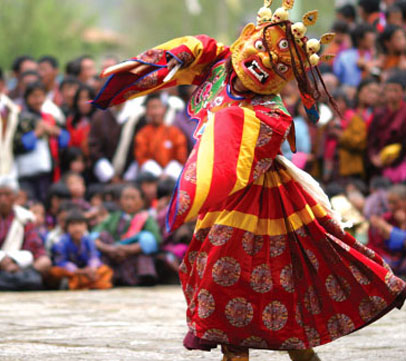The Paro Tshechu is one of the most vibrant and significant annual festivals in Bhutan, held in the town of Paro at the Paro Dzong. This colorful event typically takes place in March or April and lasts for three to four days.
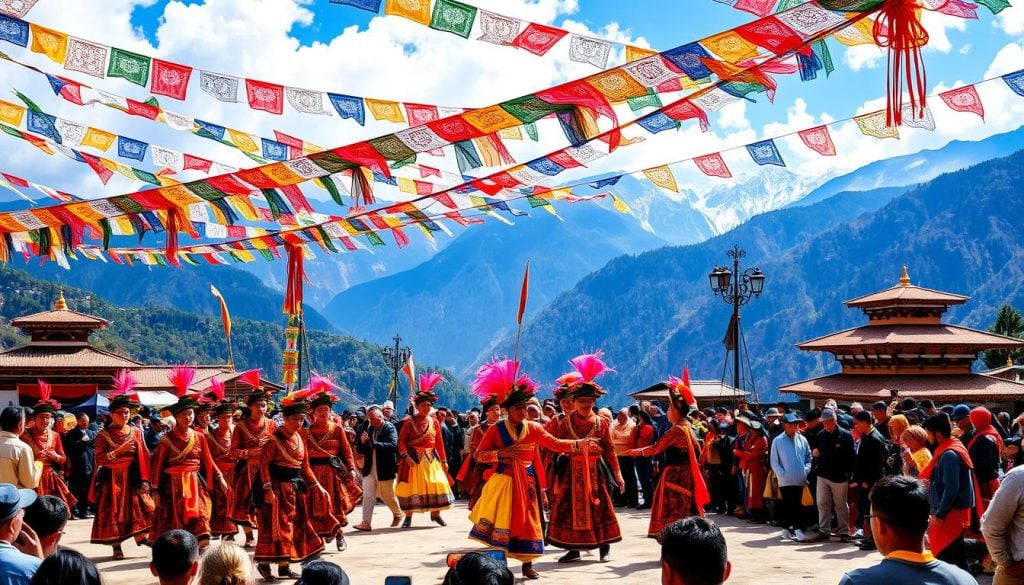
Highlights of Paro Tshechu:
Cultural Significance:
- Paro Tshechu honors the Guru Rinpoche (Padmasambhava), who is credited with bringing Buddhism to Bhutan.
- The festival celebrates Bhutan’s rich spiritual heritage and is an important occasion for locals to receive blessings and participate in religious rituals.
Traditional Mask Dances:
- The festival features Cham dances, where monks and lay performers wear elaborate masks and costumes. These dances depict various historical, religious, and mythological events.
- One of the most iconic performances is the Shacham, a mask dance that portrays the victory of good over evil.
The “Thongdrol” (Giant Thangka):
- A highlight of the festival is the display of a massive thangka(embroidered scroll) depicting the Guru Rinpoche. This sacred thangka is unfurled at the Paro Dzong on the last day of the festival, and people gather to receive blessings from its divine presence.
Colorful Processions and Rituals:
- Locals and visitors alike dress in traditional Bhutanese attire, creating a vibrant atmosphere filled with bright colors.
- The festival also includes various rituals, offerings, and prayers, as well as processions with monks carrying sacred relics.
Celebration of Bhutanese Culture:
- Paro Tshechu provides an opportunity to experience Bhutanese culture firsthand, with music, dances, and prayers blending to create a spiritual and festive ambiance.
- It is also a social event where families and communities gather, strengthening the bonds of friendship and tradition.
Tips for Visitors:
- Dress Appropriately:Wearing traditional Bhutanese dress (Gho for men and Kira for women) adds to the experience and is encouraged.
- Arrive Early:To get the best views of the dances and the Thongdrol, it’s advisable to arrive early.
- Photography:While photography is usually allowed, it’s respectful to ask permission when taking pictures of people, especially monks.


